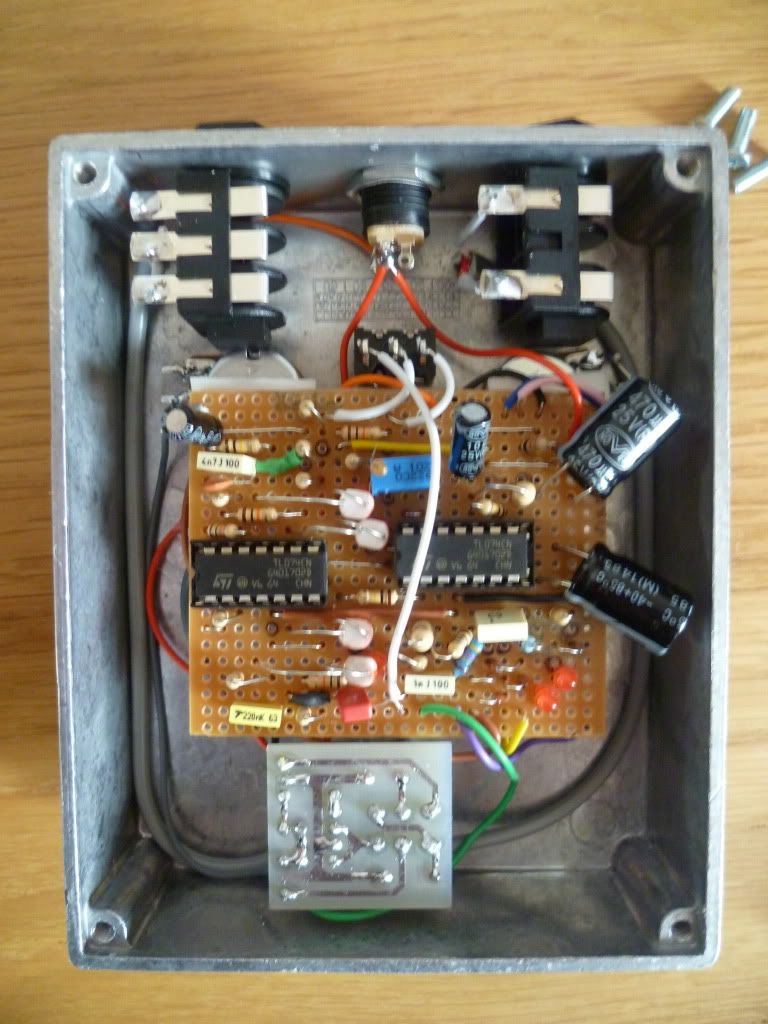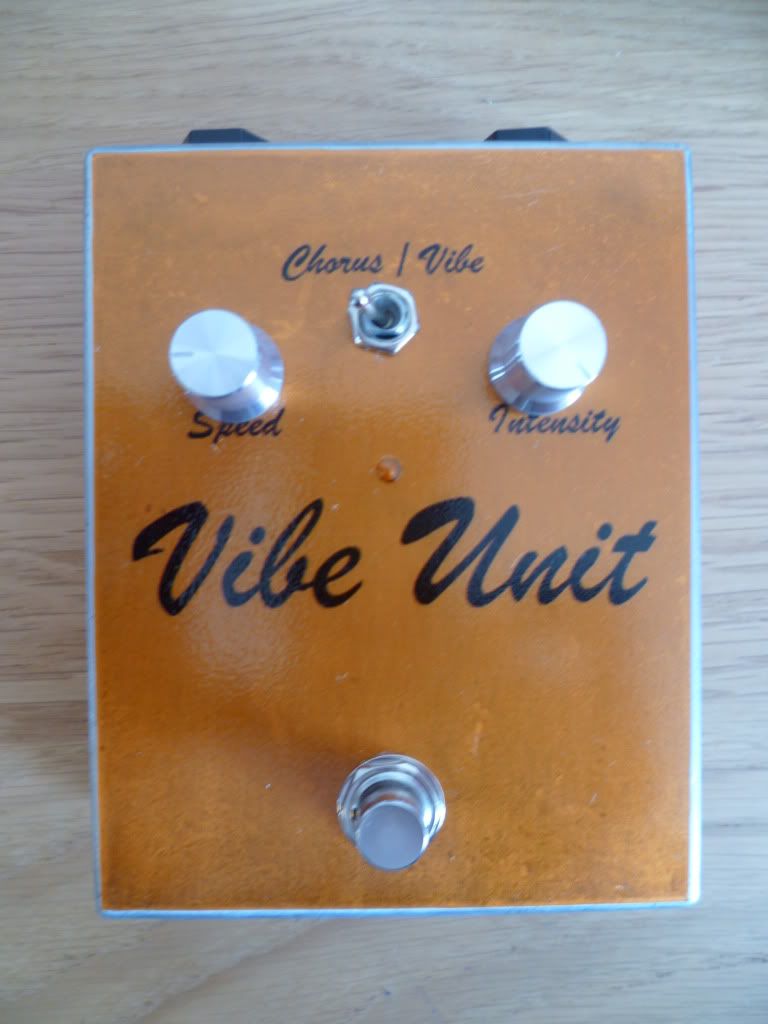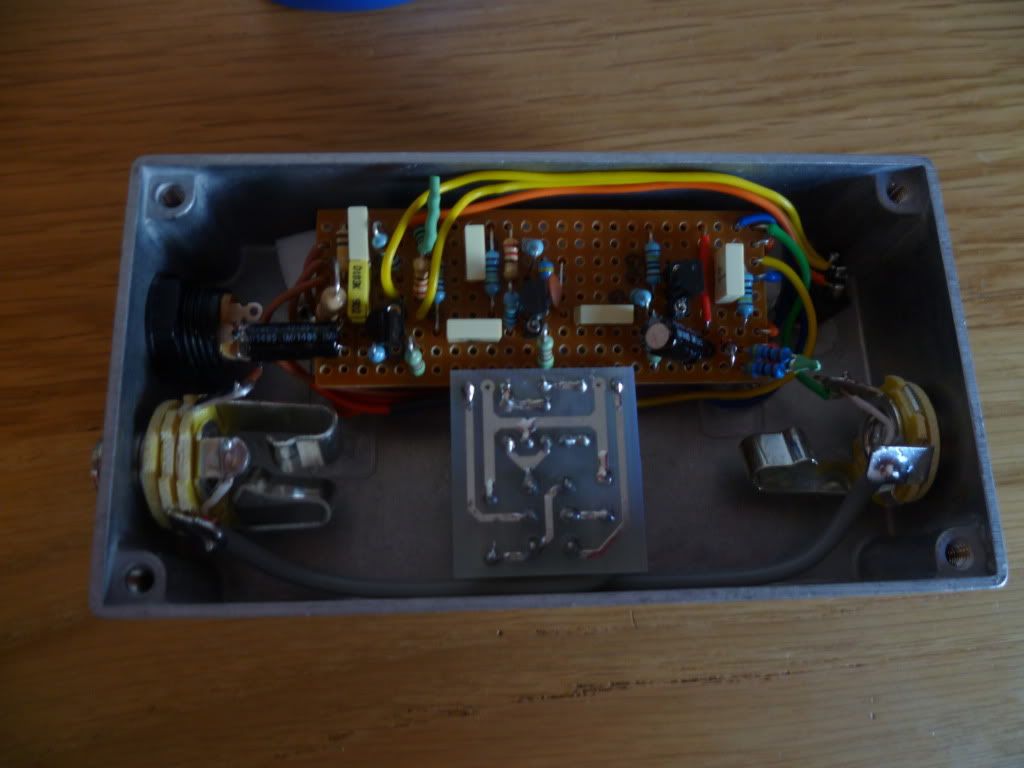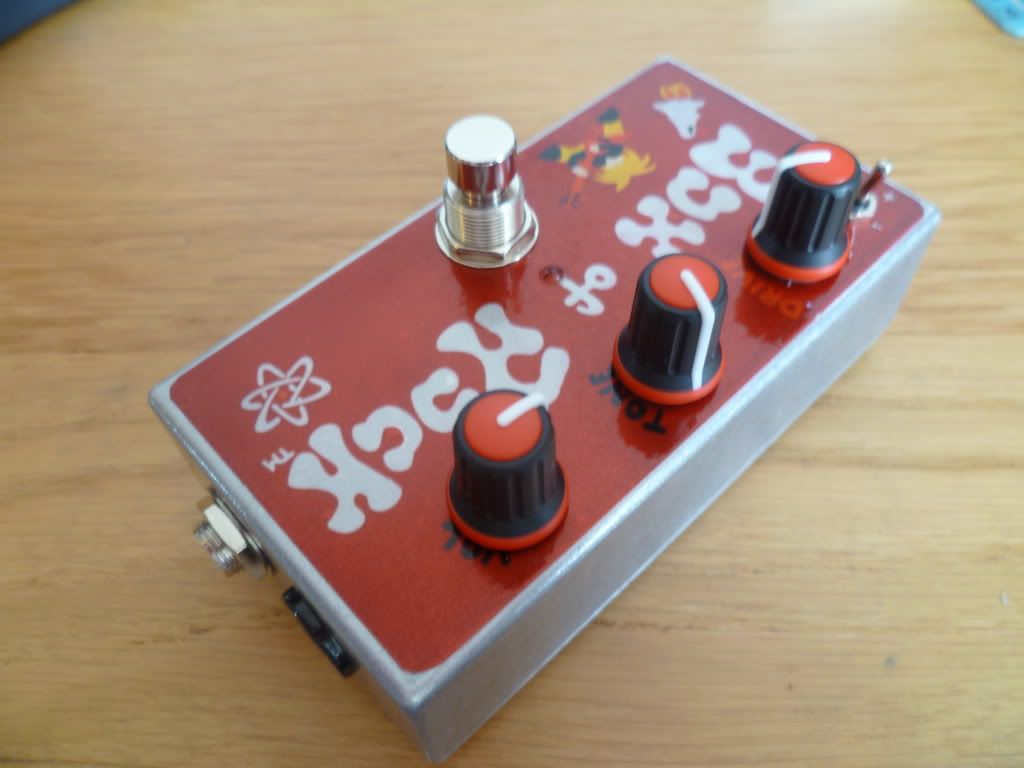HAving just taken the time to complete some more decals for my latest builds here is a couple of images of how I make and apply them.
First up, get whatever you want as the image manipulated in your favourite editor. Moment of confession here: I use MS paint! LOL. Never got into PS or used it really. So there you go. Any rough edges, you know why!
Next, get the images arranged on a page in MS word. Again, commercial layout software or CAD or something like that would be infinitely better I spose, but this serves my purposes for now.
Print a test sheet to make sure it works, then go ahead and do the real deal. I posted an earlier link about where I got my decal sheets from (QP media, do a google or look for their shop on ebay). The sheets work out around a £1 each or less if you buy in more bulk, and you can go for white or transparent.
Two things to note. Inkjet ink is not indellible on these, even if left to dry, and is sensitive to moisture. Secondly, if you intend to leave them overnight to dry, they can bend, so stick between a yellow pages or other suitably heavy textbook.
Heres what my recent one looked like fresh out the inkjet:
The intended recipients:
Note, the boxes are mildly "prepped" by wet sanding with very fine wet/dry sandpaper, then cleaned with nail polish remover. This prep is done before they are filled with components and hardware. Obviously, this would all be better if you were to apply the decals beforehand, but I do it like this for 2 reasons:
1 - the decal sheets are costly, so doing one at a time as you build a pedal is silly.
2 - I am impatient, and I like to play with my effects before I complete them !
Right, so the thing is printed, now you need to apply it. So its a case of gutting your device. If like me you have used the type of 2.1mm DC jacks that are basically made so you have to unsolder them to remove them, you will have a problem. Either unsolder (no thanks! lol) or have the guts floating around. A good way round this is to take a matching fresh die cast case, and make a sandwich of two boxes to float your guts in, so to speak, and wrap shut with masking tape... like this:
After carefully sticking down the decal, I use some Plasti-Kote spray clear acrylic. A couple of coats is enough with 10 mins drying in between. After this is dry fully, use a craft knife to gouge out the holes for the footswitch and pots. If you use a simple hole for the LED like I do, depending on the LED colour and decal colour, you can simply leave the plastic over the hole. Depends really.
Finally its a case of boxing up the pedal again. Be careful when screwing down parts as your wrench can damage the plasti-kote (so easy to do, grrr). Otherwise its plain sailing to sexy looking pedals! So much nicer for the sake of a couple quid than plain old metal boxes, and much less hassle and time consumption than spray painting (especially if like me you live in an apartment building).
Here is my "gang" all since starting properly at the beginning of the year.
Thanks again to Melx, IvIark and their blogs (see my links) for the help, inspiration, advice and parts(!) and the anonymous users of FSB, DIY and other blogs and places on the web.
If I can be of any help to people reading this then post up a comment.
Cheers!
This is a blog following my misdemeanours in the field of DIY guitar effects pedal building.
Tuesday, 12 April 2011
Mega Update
So its been forever since I have updated this, and in that space of time I have completed 3 more effect builds.
First up, I have to get this one documented as it caused me no end of frustration. It still isnt perfect as its a bit noisy, and I am not sure why, but it works. I built two of these Little Angel Chorus pedals, following this schematic:
Ok, last but not least, I have been thinking to make one of these for a while as I reckon'd it sound awesome into my Blackstar Artisan 15. The Artisan is a wonderful amp, but also on the bright side. The Box of Rock is known for being dark-ish and bassy/sub heavy. I built the drive only side from this schematic:
Its not the most space saving of layouts unfortunately. I had some standard 25 x 9 board, and I had to put tone 3 into the same hole as R15, but not a big deal. I am not at the point yet where I am A) skilled enough or B) bothered enough to make my own layouts. Ill stick with what I presume will work 1st time rather than debug my own mess. However, Ill come back to this point in a moment ;)
Here is what the build looked like for me:
Not the best picture sorry. Anyway, I had to bodge a 330r and another resistor cos I didnt have the right values (82r) I doubt it woulda made much difference to just use the closest I had (say 220r and a 100r). Good thing was it worked. I boxed it all up:
This build used the last pair of Neutrik (switchcraft style) jacks. Mainly cos I wanted it to match my Fuzz Factory somewhat. I used some shielded cable for the ins and outs (dual core, so you can wire the grounds easily too). Rather than the neon orange Van Damme stuff Ive got this gray version from BitsBox. Works well.
Upon listening to the effect I was wishing for a hair more gain. Keen eyed effect fans will know mr Vex launched a cheapo series (still £150) which includes someting called a Distortron and the Mastrotron. Mastotron is basically a Woolly Mammoth, SMD, with 2N2222 trannys and switchale subs, with a input impedance knob (which is pretty useful, wish Id built that into my Mammoth, ahem...). Anyway the Distortron is pitched as the drive only part of the Box Of Rock, but again has added features to go with its overseas SMD construction. It has a lo/hi gain toggle, and switchable subs. As I am happy with the bass levels this thing kicks out, I was only interested in the Gain. Reading on FSB I found out that the switch basically shorts the 330r resistor from the 3rd transistor to ground for higher gain.
I implemented this using a SPDT switch and changing the layout a tiny bit. Excuse the use of MS paint:
Heres a somewhat poorly lit gutshot (note, wires for SPDT are yellow and orange in my build):
Finally, here is the finished article, with nice Red knobs and my hack job from the original artwork. Im really happy with this build. Not sure if its ended my search for that classic 80s distortion sound, but its simple to build and cheap parts. I will have to do another mega update with sound clips for all these new pedals. Stay in touch for that!
Red for RAWK!
First up, I have to get this one documented as it caused me no end of frustration. It still isnt perfect as its a bit noisy, and I am not sure why, but it works. I built two of these Little Angel Chorus pedals, following this schematic:
Its classed as a verfied layout, still, two attempts and a couple of PT2399 IC's later (thanks IvIark and Dr Tweek for the help with those) and the damn thing wouldnt chorus for the life of me. You can check out the main thread I used for help here: http://www.freestompboxes.org/viewtopic.php?f=13&t=10276&p=141735&hilit=little+angel#p141735
Anyway, here are what my boards look like. The first one is atrocious, and all wonky and horrid. In hindsight Im not suprised it didnt, and still doesnt, function:
This is the second one hooked up to really the cheapest jacks ever (never use ebay...) but its good for testing purposes.
The moral of this tale is to always check for solder bridges, cos thats what it turned out to be... sigh.
Anyway, I'm not 100% happy with it, and there are some revisions to the circuit posted that I recommend anyone wishing to follow this and build one takes note of, particularly if you arent using a PCB but Veroboard.
This is what I have made for the decal, an homage to the lovely EH Small Clone:
Next up, the pedal that restored my faith in my Vero abilities. The John Hollis Easy Vibe. I have long loved the sound of Uni Vibes, but really, they are prohibitively expensive to buy a decent one these days. Sure Danelectro knock one out for £40 but then you have to rehouse it and all that shit. Anyway, John Hollis. I just found out about this dude and he seems to be somewhat of a pedal legend. His website is full of awesome stuff, including a handful of promising sounding pedals. I decided to make the Easy Vibe, cos it seemed, well, EASY (sorry) and I had the requisite parts (minus the ICs and LDRs, couple of quid from Bits Box).
The vero is one I found via Google, courtesy of some fine chap at DIYSB:
These are some pictures from the build:
OMG THATS A LOT OF SOLDERING
Component side up:
Because of the size of the Vero board, you need to fit this in a bigger box. This is mine with some of the hardware layed out. As with my other builds, take time here, and it saves headaches later on...
As you can see Im using whats left of some nice, but not as nice as metal, Rean semi open plastic jacks. These are about 60p from Rapid in the UK. I have recently placed a mass order from Banzai for more metal switchcraft jacks. As before, the idiots are taking ages to ship. Still, these are similar to the ones used in Lovetone, and seem robust, if a little less chunky and nice as the metal ones. Im officially out of Boss style 9v jacks now until Banzai deliver, so Its gonna be a quiet few weeks after this mass update...
Anyway, this is a nice pic of everything in. Its not the prettiest thing ever, but it sounds lush. Note, I havent shrinkwrapped the LED/LDR combos. I tried it, and the sound was spot on for me. I have ordered some big shrinkwrap that I can resersibly attach when it arrives and hear any difference:
Heres a cool little video of the 4 LEDs pulsing and me messing with the rate control :)
Hopefully that works...
Anyway. Its a great effect and gives a faithful sound alike of the real thing. The Chorus / Vibrato switch works a treat. Chorus blends back in the straight signal to give that hollowed out phase shifty vibe sound. Vibe is effected only and gives pitch modulation. Overall it sounds KILLER and very similar to my Lovetone Doppelganger (high praise indeed!).
I have done a decal for this, nice and simple and orange :)
Its not the most space saving of layouts unfortunately. I had some standard 25 x 9 board, and I had to put tone 3 into the same hole as R15, but not a big deal. I am not at the point yet where I am A) skilled enough or B) bothered enough to make my own layouts. Ill stick with what I presume will work 1st time rather than debug my own mess. However, Ill come back to this point in a moment ;)
Here is what the build looked like for me:
Not the best picture sorry. Anyway, I had to bodge a 330r and another resistor cos I didnt have the right values (82r) I doubt it woulda made much difference to just use the closest I had (say 220r and a 100r). Good thing was it worked. I boxed it all up:
This build used the last pair of Neutrik (switchcraft style) jacks. Mainly cos I wanted it to match my Fuzz Factory somewhat. I used some shielded cable for the ins and outs (dual core, so you can wire the grounds easily too). Rather than the neon orange Van Damme stuff Ive got this gray version from BitsBox. Works well.
Upon listening to the effect I was wishing for a hair more gain. Keen eyed effect fans will know mr Vex launched a cheapo series (still £150) which includes someting called a Distortron and the Mastrotron. Mastotron is basically a Woolly Mammoth, SMD, with 2N2222 trannys and switchale subs, with a input impedance knob (which is pretty useful, wish Id built that into my Mammoth, ahem...). Anyway the Distortron is pitched as the drive only part of the Box Of Rock, but again has added features to go with its overseas SMD construction. It has a lo/hi gain toggle, and switchable subs. As I am happy with the bass levels this thing kicks out, I was only interested in the Gain. Reading on FSB I found out that the switch basically shorts the 330r resistor from the 3rd transistor to ground for higher gain.
I implemented this using a SPDT switch and changing the layout a tiny bit. Excuse the use of MS paint:
Heres a somewhat poorly lit gutshot (note, wires for SPDT are yellow and orange in my build):
Finally, here is the finished article, with nice Red knobs and my hack job from the original artwork. Im really happy with this build. Not sure if its ended my search for that classic 80s distortion sound, but its simple to build and cheap parts. I will have to do another mega update with sound clips for all these new pedals. Stay in touch for that!
Red for RAWK!
Monday, 4 April 2011
Echo Base Delay and decal updates
I decided to purchase my first pre-fabricated PCB. Ive wanted to make a delay pedal for a while and to be honest, you can do this on vero board, but it's massive and I've heard nothing but good words said for the PCBs from Music PCB
The PCB was around £14 total inc shipping and took around a week to arrive safe and sound. The quality, not that I really know what I am judging against, seems top notch. I think its dual sided, through plated, which from my brief readings seems to be the professional way to do it. He also provides a fantastic PDF with bill of materials and a plethora of mods that you can do to the pedal.
For your own interest, download the PDF from here: ECHOBASE PDF
I decided to go with the standard Tails switch ( a simple SPDT switch to decide whether your tails are on or off when you bypass the echo), then add on a footswitch for the LFO. This adds or removes modulation from the repeats, for Memory Man type effects or to simulate tape delay warble. Lastly, I wanted to add in the LFO wave shape mod, this allows you add on a pot which will go from stock sine wave to choppy pitch shifty square wave for the modulation. The modulation can go from subltle shorussy effects up to full on pitch modulating sea sickness vibrato. in a work, this box is brilliant.
Here are a few pictures from the build. It must be said working with a quality PCB is a doddle, and its something I will do more of in the future. It reaffirms my faith in PT2399 chips - Ive built 2 x little angel chorus boards and neither modulate, and also my faith in my abilities. This is without doubt the most complex build Ive yet to undertake.
Here is the box drilled with some pots. I hadnt at this point decided where the LFO shape would go. Id got a bit of feel for how long the leads needed to be. Using nice sealed back pots, but sadly not PCB mounted which would have been ideal I spose. Next time..
This is the board with most of the components on.
Heres the nearly finished article, with pots etc wired in and ICs socketed.
There is a significant amount of offboard wiring. I had to bodge a resistor onto the waveshape pot (documented in the PDF) and covered it with liberal amounts of green heatshrink :)
This is one pedal where true bypass freaks might get upset. It uses similar buffering to a boss pedal. As such a SPST footswitch would suffice, but I used the nice Alpha DPDT I use for all my other builds. This is with the box pretty much wired up.
This is the finished pedal before and after decalisation(!) I havent got knobs yet for the pots. The coolest thing about this pedal is the LED will pulse with the modulation speed when its engaged, happy with that.
Got some inspiration from another EchoBase build and decided to use these bubble chamber (some kinda physics stuff) as artwork, along with the requesite Star Wars font. I am really happy with the finish. Couple air bubbles, but there always is with these decals and really unless you are picky you wont notice them day to day.
Speaking of decals, I also used the same sheet of vinyl to make some other decals
Firstly I did a Mario Bros. one for the Nintendo noisemaker thing I posted on previously.
And a Banksy rip off for my Red Lllama / Green Ringer. Sadly, upon putting everything back in the box, the Red Llama side doesnt work. The LED lights, but absolutely no sound goes through. Otherwise the Green Ringer side is fine. If anyone has a quick pointer for what I might have messed up please let me know (IvIark - if ur reading this! help!)
I think it looks pretty awesome if I do say so myself.
Wall = Volume
Peace = Fuzz
Named after the Banksy book "Wall and Piece", but I used Peace instead of course, a deliberate thing not a typo...
Art = filter switch for the octave.
Vandalism = Red Llama fuzz, Spraypaint = Green Ringer Octave.
Now to debug it! Maybe I'll change the orange LED for green while I am at it...Damn thing...
Will be back shortly with another update on a build I completed yesterday!
The PCB was around £14 total inc shipping and took around a week to arrive safe and sound. The quality, not that I really know what I am judging against, seems top notch. I think its dual sided, through plated, which from my brief readings seems to be the professional way to do it. He also provides a fantastic PDF with bill of materials and a plethora of mods that you can do to the pedal.
For your own interest, download the PDF from here: ECHOBASE PDF
I decided to go with the standard Tails switch ( a simple SPDT switch to decide whether your tails are on or off when you bypass the echo), then add on a footswitch for the LFO. This adds or removes modulation from the repeats, for Memory Man type effects or to simulate tape delay warble. Lastly, I wanted to add in the LFO wave shape mod, this allows you add on a pot which will go from stock sine wave to choppy pitch shifty square wave for the modulation. The modulation can go from subltle shorussy effects up to full on pitch modulating sea sickness vibrato. in a work, this box is brilliant.
Here are a few pictures from the build. It must be said working with a quality PCB is a doddle, and its something I will do more of in the future. It reaffirms my faith in PT2399 chips - Ive built 2 x little angel chorus boards and neither modulate, and also my faith in my abilities. This is without doubt the most complex build Ive yet to undertake.
Here is the box drilled with some pots. I hadnt at this point decided where the LFO shape would go. Id got a bit of feel for how long the leads needed to be. Using nice sealed back pots, but sadly not PCB mounted which would have been ideal I spose. Next time..
This is the board with most of the components on.
Heres the nearly finished article, with pots etc wired in and ICs socketed.
There is a significant amount of offboard wiring. I had to bodge a resistor onto the waveshape pot (documented in the PDF) and covered it with liberal amounts of green heatshrink :)
This is one pedal where true bypass freaks might get upset. It uses similar buffering to a boss pedal. As such a SPST footswitch would suffice, but I used the nice Alpha DPDT I use for all my other builds. This is with the box pretty much wired up.
This is the finished pedal before and after decalisation(!) I havent got knobs yet for the pots. The coolest thing about this pedal is the LED will pulse with the modulation speed when its engaged, happy with that.
Got some inspiration from another EchoBase build and decided to use these bubble chamber (some kinda physics stuff) as artwork, along with the requesite Star Wars font. I am really happy with the finish. Couple air bubbles, but there always is with these decals and really unless you are picky you wont notice them day to day.
Speaking of decals, I also used the same sheet of vinyl to make some other decals
Firstly I did a Mario Bros. one for the Nintendo noisemaker thing I posted on previously.
And a Banksy rip off for my Red Lllama / Green Ringer. Sadly, upon putting everything back in the box, the Red Llama side doesnt work. The LED lights, but absolutely no sound goes through. Otherwise the Green Ringer side is fine. If anyone has a quick pointer for what I might have messed up please let me know (IvIark - if ur reading this! help!)
I think it looks pretty awesome if I do say so myself.
Wall = Volume
Peace = Fuzz
Named after the Banksy book "Wall and Piece", but I used Peace instead of course, a deliberate thing not a typo...
Art = filter switch for the octave.
Vandalism = Red Llama fuzz, Spraypaint = Green Ringer Octave.
Now to debug it! Maybe I'll change the orange LED for green while I am at it...Damn thing...
Will be back shortly with another update on a build I completed yesterday!
Subscribe to:
Comments (Atom)





























